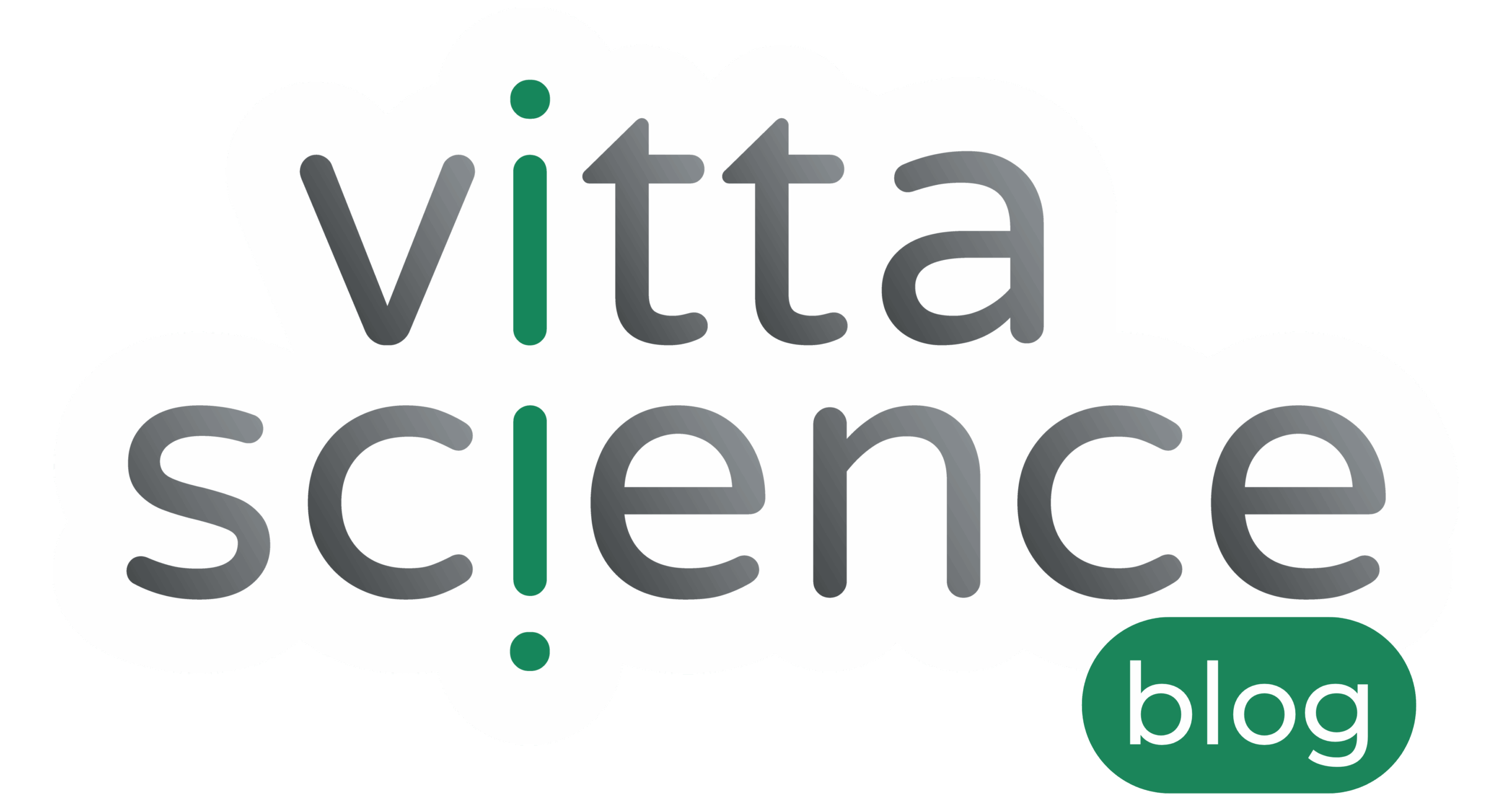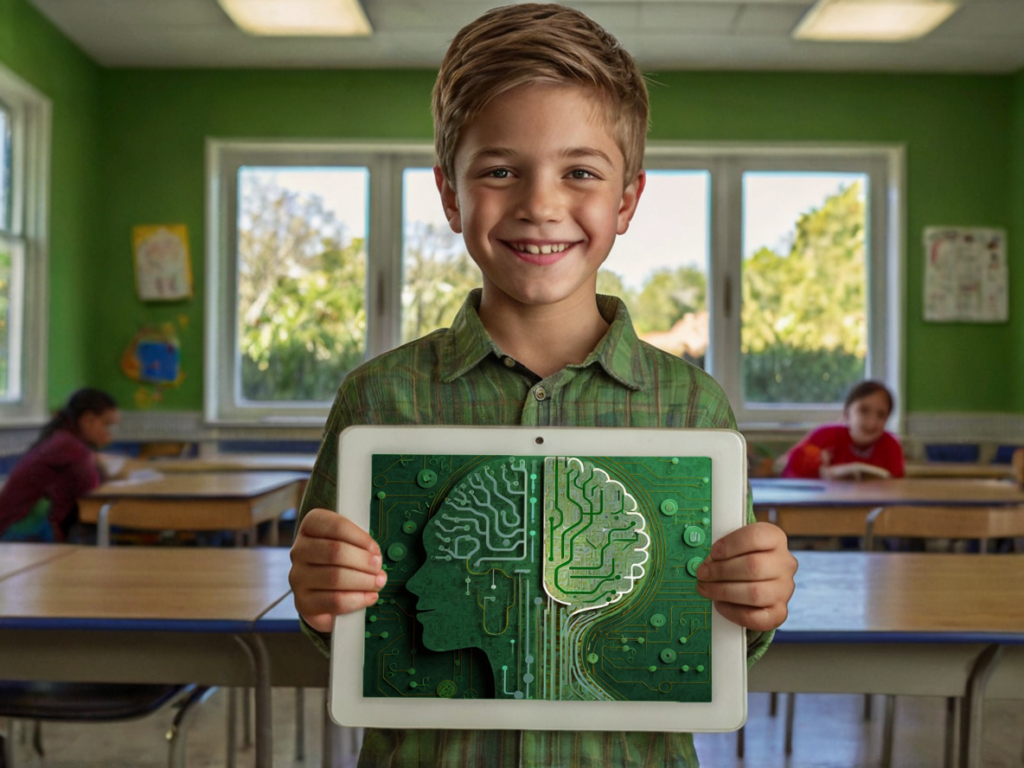What is artificial intelligence?
A simple definition of AI
Artificial intelligence (AI) uses complex systems and learning algorithms to mimic human intelligence. This means that computers or computer programs can be designed to perform tasks that normally only humans are capable of. These tasks include things like understanding language, recognizing images, solving problems, or learning new information. Generative AI models, such as those used in education, draw inspiration from the workings of the human brain to create original content.
It is important to note that artificial intelligence, contrary to what we sometimes see in movies, does not have a conscience or thoughts of its own. It only follows pre-programmed instructions or learns information from data to improve its performance, using the algorithms that constitute it. AI therefore does not have intentions, desires or emotions like a human being.
AI examples you already know
Artificial intelligence is already present in many aspects of our daily lives, often so seamlessly that we don’t even think about it anymore. Here are some real-world examples of AI you’re probably already using:
Voice assistants : Whether it’s Siri on your iPhone, Amazon’s Alexa, or Google Assistant, these tools use artificial intelligence to understand and answer your questions or execute voice commands. For example, when you ask Alexa to play music, it uses AI to understand your request and search its database for the appropriate song.
Online recommendations : If you’ve ever watched a series on Netflix or bought a book on Amazon, you’ve probably noticed that these platforms recommend other content you might like. These recommendations are generated by AI systems that analyze your past preferences and those of millions of other users to predict what you’re likely to like.
Machine translators : Google Translate and other similar tools use AI to translate text from one language to another. While these translations aren’t always perfect, they’re constantly improving thanks to machine learning algorithms that analyze millions of human-translated texts to refine their results. Even as these tools are developed, they often require human proofreading.
In recent years, systems like ChatGPT have marked a significant advance in machine learning, offering new educational possibilities.
These examples show that AI is not a technology of tomorrow, but of today, and will continue to evolve in the future. It is integrated into many of the services we use every day, making our lives more convenient and facilitating access to information and services.
However, AI remains a tool, which must be used ethically and responsibly to get the most out of it while minimizing risks.
By understanding these basics, you are already familiarizing yourself with one of the most powerful technologies of our time. In the rest of this article, we will explore how this technology works in practice and how you can experiment with it yourself using the tools offered by Vittascience.
How does AI learn?
Learning by example: a comparison with humans
Artificial intelligence research focuses on improving neural networks, enabling more nuanced decision-making, which is useful for adapting learning. Artificial intelligence learns in a similar way to a child discovering the world. To understand this, imagine a child learning to recognize a cat. At first, they don't know what it is, but as they see pictures of cats and hear the word "cat" associated with those pictures, they begin to understand. Over time, they can even recognize a cat they've never seen before. This is called learning by example.
Similarly, AI models rely on vast data networks to improve their machine learning. If you want an AI to recognize images of cats, you provide it with thousands of photos.
AI, through its neural networks, analyzes these images, identifies recurring patterns, and learns to distinguish a cat from other animals or objects. This process is called " supervised learning", because it requires a labeled dataset (in this case, images already identified as cats).
But AI can also learn more autonomously, without each data being labeled in advance, thanks to its data analysis and processing capacity. For example, in theunsupervised learning, we give the AI a large dataset without labels and ask it to find patterns or groupings. It's like the child has to figure out on their own what all the animal pictures they see have in common.
Finally, there is also thereinforcement learning, where the AI learns through trial and error, much like a child trying to ride a bike. The AI receives a reward (or positive feedback) when it does something right, and a punishment (or negative feedback) when it gets it wrong. Over time, it adjusts its actions to maximize the rewards.
The different types of learning and recognition (images, sounds, postures)
Different AI systems are designed to process different types of data, whether it is images, sounds, or movements. These different forms of recognition learning are used in various fields to make machines smarter and more useful in everyday life.
Learning about images : As mentioned earlier, AI can be trained to recognize objects, faces, or scenes in images. This is useful in applications like security (facial recognition), healthcare (diagnostic imaging), and social media (content filtering).
Learning about sounds : AI can also learn to recognize sounds. For example, it can be trained to identify a person's voice, distinguish between different types of music, or detect sound anomalies in industrial environments to prevent breakdowns. For example, Apple offers the "sound recognition" option on these devices to launch an alert if the sound of an alarm is recognized.
Learning about postures : Finally, AI can learn to interpret human movements, which is particularly useful in areas such as medical rehabilitation, sports, or the creation of human-machine interfaces. For example, AI can be used to analyze an athlete's postures in order to give them advice on how to improve their performance.
Experiment with AI with Vittascience
At Vittascience, we've integrated artificial intelligence tools that allow you to put these concepts into practice in a fun and educational way. Our tools enable users to experiment with different AI models and understand how these intelligent systems process data.
These tools are designed to be accessible to everyone, even those with no prior experience with AI.
However, it is crucial to rigorously test AI-generated content before integrating it into your courses to ensure its relevance and accuracy.
Create with AI: Text and Image Generation
One of the most fun ways to learn about AI is to experiment with generating text and ofimagesWith our tools, you can generate text or images based on your own ideas. Text generation is the tool that allows you to understand models like ChatGPT, which you can use to have a "chat" or as an assistant.
Through image generation, you can write a sentence or provide a description and watch the AI create an image that matches your expectations. These experiences are not only entertaining, but they also demonstrate how AI can transform ideas into tangible results. It's a great way to explore AI-enhanced creativity.
Train Your Own AI: An Educational Game for Everyone
For those who want to go further, Vittascience also offers tools to train your own AI. You can choose to create an AI that recognizes images, of the sounds, or posturesThe process is simple: you provide examples (like photos or audio recordings) according to the chosen interface, and the AI learns to recognize them thanks to its neural network.
What makes this experience even more rewarding is that you can watch the AI improve over time. For example, if it initially misidentifies a sound or image, you can provide it with more examples to refine its learning. This is a great way to learn the basics of artificial intelligence while having fun.
Once your program is created, you have the possibility to consult the neural network of your artificial intelligence model to understand how this machine learning system works.
These tools are designed to be educational and accessible, allowing everyone to discover the world of AI in an engaging way. Not only do you learn how AI works, but you also discover how to use it to create and experiment, while experiencing the satisfaction of seeing your own projects take shape.
Whether you are a teacher looking to Integrating AI into your classroom or a tech enthusiast curious to learn more, these tools are an ideal gateway into the fascinating world of artificial intelligence.
Why is it important to understand AI today?
The impact of AI on our daily lives and our future
Artificial intelligence has become an integral part of our daily lives, even if we don't always notice it. Whether it's in our phones, our homes, our cars, or even in the way we interact online, AI is everywhere.
Understanding how it works is essential not only to use these technologies effectively, but also to anticipate and adapt to the changes it brings.
AI is transforming entire sectors, from healthcare and education to finance and transportation. In medicine, for example, AI enables faster and more accurate diagnosis of diseases by analyzing medical images or processing complex data.
In transportation, it paves the way for autonomous vehicles which, one day, could make our roads safer and more efficient.
However, the impact of AI extends far beyond these areas. It is also changing how we work, learn, and even communicate. Jobs are evolving, with a growing demand for AI and data analytics skills. Companies are looking for people who can understand and leverage AI to improve their processes, innovate, and remain competitive.
Thus, learning what AI is and how it works is becoming not only an advantage, but almost a necessity in today's world, given that its development is constantly evolving.
Understanding AI also means actively participating in discussions about its ethical and responsible use. AI raises important questions about privacy, security, and even algorithmic bias. By being informed, we can better help guide these technologies toward uses that benefit everyone.
How AI can enrich student learning with Vittascience
Artificial Intelligence offers unique opportunities to enrich student learning, especially in the educational setting. With Vittascience’s AI tools, students don’t just read or listen to lectures, they actively participate in class sessions by directly experimenting with cutting-edge technologies. This makes learning more dynamic and engaging.
In the educational field, choosing an appropriate AI model is crucial. A well-designed system can help in making pedagogical decisions, by providing useful data processing capabilities to assess student progress. Although the underlying code However complex, teachers can focus on hands-on testing of these tools to ensure their effectiveness in the classroom.
By allowing students to create and train their own AIs to recognize images, sounds, or postures, Vittascience offers them a hands-on learning experience. They don’t just understand how AI works theoretically, but see the concrete results of their efforts. This approach reinforces understanding of concepts while stimulating students’ creativity and interest in science and technology.
Teachers, for their part, find in Vittascience tools a valuable resource to diversify their teaching methods. AI also makes it possible to personalize learning paths, adapting exercises and challenges to the level of each student, which helps maximize their potential.
Conclusion
Artificial intelligence is no longer a science fiction technology. It is an integral part of our daily lives and plays a crucial role in many aspects of our lives. Understanding how AI works, why it matters, and how to use it is essential to navigate the modern world and make the most of it.
Generative AI opens up new perspectives in various educational fields, from the development of teaching resources to the creation of interactive content. With the tools offered by Vittascience, students and teachers can not only discover the basics of AI, but also directly experience this technology.
This not only enriches learning, but also prepares students to become competent and informed actors in an increasingly digital world.
By embracing AI today, they are equipping themselves with the skills needed to meet the challenges of tomorrow.

